Understanding the Project Manager Cover Letter
A project manager cover letter is your first opportunity to impress a potential employer. It’s a concise document accompanying your resume, providing a snapshot of your qualifications and enthusiasm for a specific project manager position. Unlike a resume, which presents your professional history, a cover letter allows you to explain why you are the perfect fit for the role and the company. A well-crafted cover letter significantly increases your chances of getting an interview, making it a crucial part of your job application process.
Purpose of a Cover Letter
The primary purpose of a cover letter is to introduce yourself and express your interest in a specific job. It highlights your relevant skills, experiences, and achievements that align with the job requirements. Moreover, a cover letter allows you to demonstrate your understanding of the company and the role, showing that you’ve done your research and are genuinely interested in joining their team. By articulating your unique value proposition, you can differentiate yourself from other applicants.
Key Components of a Cover Letter
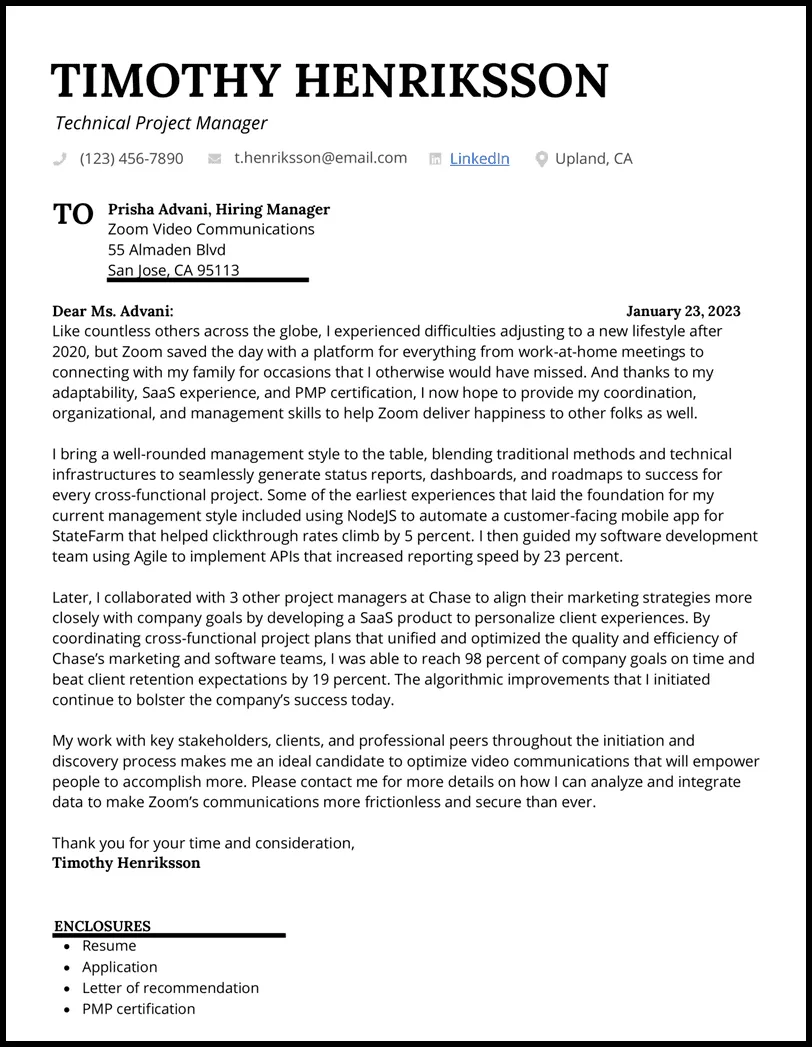
A compelling cover letter typically consists of several key components. These include a professional header, a personalized salutation, a concise introduction, detailed body paragraphs highlighting your skills and experience, and a compelling closing that expresses your interest and encourages further action. Each section must be carefully crafted to convey your qualifications and enthusiasm effectively. The language should be professional, engaging, and tailored to the specific job and company.
Researching the Company
Before writing your cover letter, thoroughly research the company and the specific project manager position. This research enables you to tailor your letter, showcasing how your skills and experiences align with their needs and values. Visit their website, read industry news about the company, and review their social media profiles. Understanding the company’s mission, values, and current projects will help you demonstrate your genuine interest and provide specific examples of how you can contribute to their success. Demonstrating you’ve done your homework sets you apart.
Tailoring Your Cover Letter
A generic cover letter will likely end up in the rejection pile. Customize each cover letter for the specific job and company you are applying to. This involves highlighting the skills and experiences most relevant to the job description and using the company’s language and tone. Referencing specific projects, challenges, or achievements that demonstrate your capabilities will further enhance your application. Tailoring your cover letter shows you’ve put in the effort and are truly interested in the role.
Essential Sections to Include in Your Cover Letter
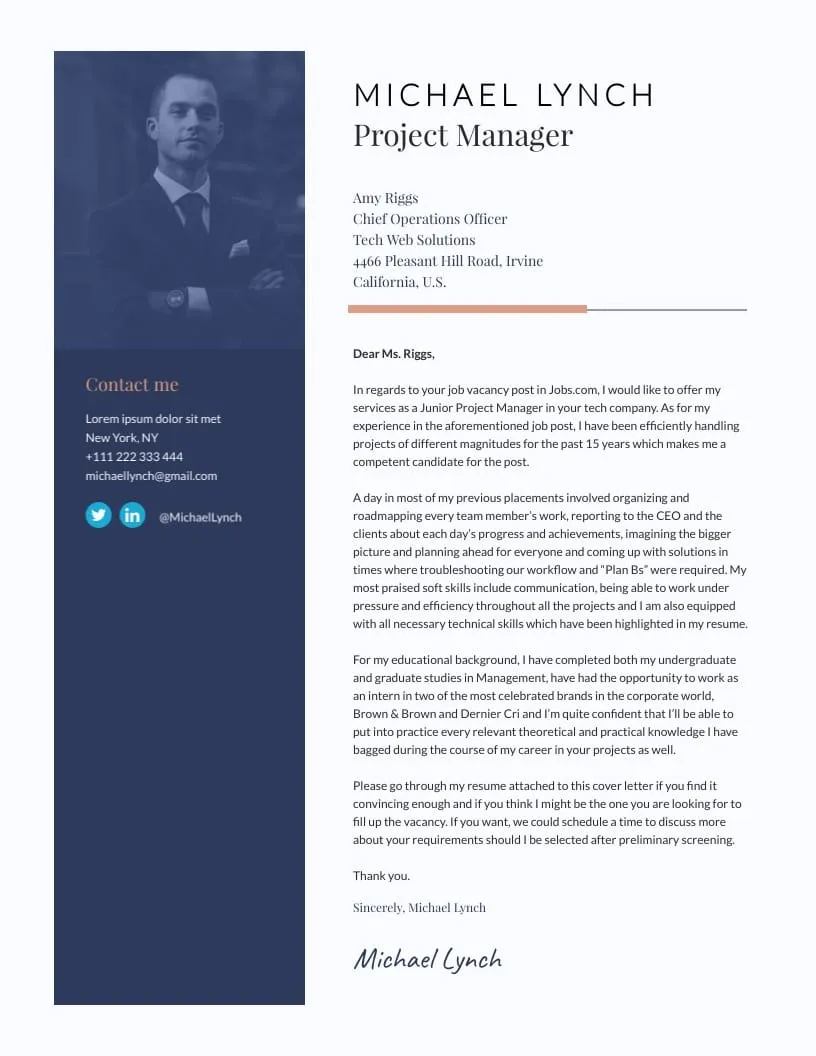
Header
The header should be professional and include your contact information, making it easy for the hiring manager to reach you. This should include your name, phone number, email address, and optionally, your LinkedIn profile URL. Ensure your contact details are accurate and up-to-date. Using a clean and organized format in your header will give a positive first impression.
Your Contact Information
Your contact information should be clearly visible at the top of the page. Include your full name, phone number, and professional email address. It is advisable to use a professional-sounding email address. Double-check the accuracy of your contact information to ensure the hiring manager can easily reach you.
Date
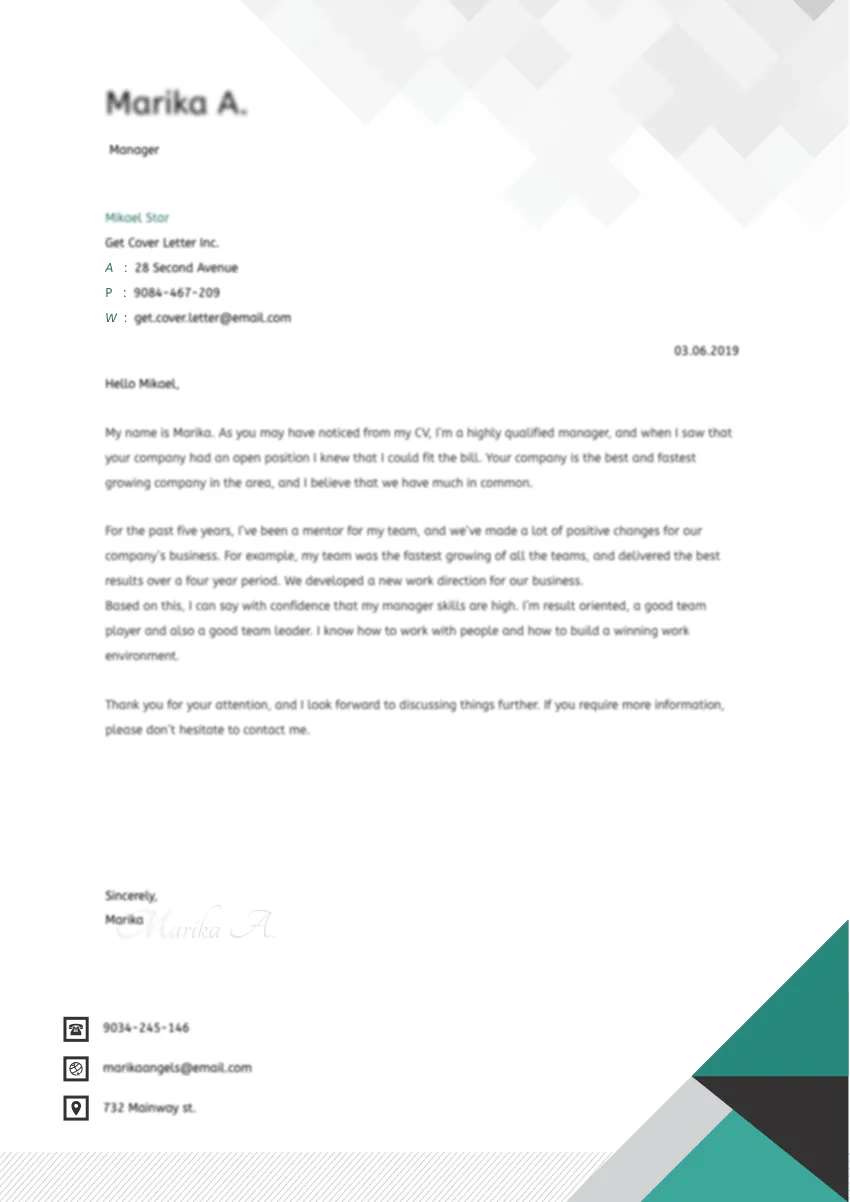
Include the current date, formatted appropriately, below your contact information. This helps the reader understand when you submitted your application.
Hiring Manager’s Information
If possible, address your cover letter to a specific person (e.g., the hiring manager or the recruiter). Researching the name of the hiring manager adds a personal touch. If you cannot find a name, use a professional salutation like “Dear Hiring Manager”.
Salutation
Use a professional salutation to greet the hiring manager. If you know the name, use “Dear Mr./Ms./Mx. [Last Name]”. If you don’t know the name, “Dear Hiring Manager” is a suitable alternative. Avoid informal greetings like “Hi” or “Hello”.
Body Paragraph 1: Introduction

The introduction should capture the reader’s attention immediately. State the position you are applying for and where you saw the job posting. Then, express your enthusiasm for the role and briefly summarize why you are a strong candidate. Keep it concise and focused. This sets the tone for the rest of your letter and entices the reader to continue.
Stating the Position
Clearly state the specific project manager position you are applying for. Use the exact title from the job posting to avoid any confusion. This immediately indicates your intent and aligns with the employer’s needs.
Highlighting Your Enthusiasm
Express genuine enthusiasm for the opportunity. Show that you are excited about the role and the company. Mention what aspects of the job or company particularly interest you. This demonstrates your passion and motivates the reader.
Body Paragraph 2: Skills and Experience
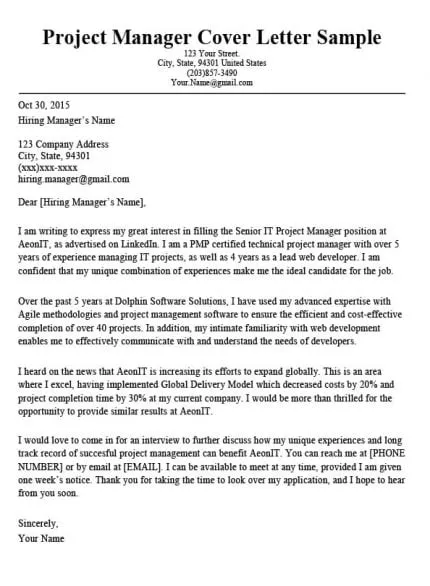
This is where you showcase your relevant skills and experience. Highlight your accomplishments and how they align with the job requirements. Use specific examples to illustrate your capabilities. Be sure to provide quantifiable results whenever possible to demonstrate your impact.
Quantifying Your Achievements
Whenever possible, quantify your achievements. Use numbers and metrics to demonstrate your impact. For example, instead of saying “managed projects successfully”, say “Successfully managed projects, delivering on time and within budget, resulting in a 15% increase in efficiency.” Quantifiable results make your achievements more compelling.
Using Action Verbs
Use strong action verbs to describe your accomplishments. Words like “managed,” “led,” “developed,” “implemented,” and “achieved” can make your cover letter more dynamic and engaging. Action verbs convey confidence and demonstrate that you took initiative.
Body Paragraph 3: Why You’re a Good Fit
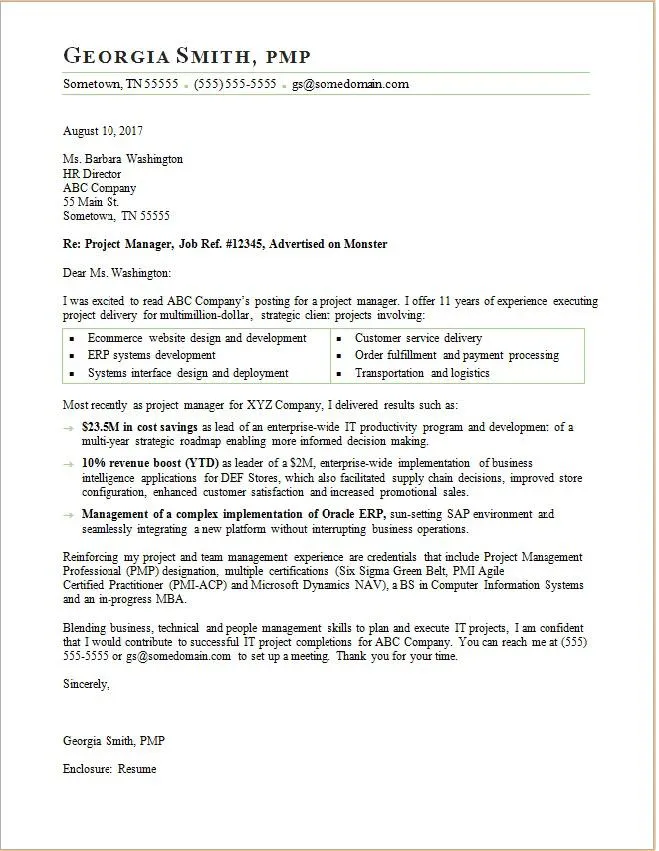
In this paragraph, explain why you are a good fit for the company and the specific project manager role. Refer to the company’s values and culture, and explain how your skills and experience align with them. Demonstrate your understanding of the role and how you can contribute to the team’s success.
Company Culture and Values
Show that you understand the company’s culture and values. Mention specific initiatives or aspects of the company that resonate with you. This demonstrates that you are not only qualified but also a potential cultural fit, which is essential to the hiring manager. Researching the company’s website and social media profiles is useful here.
Showcasing Your Understanding of the Role
Demonstrate your understanding of the project manager role and its requirements. Briefly discuss your approach to project management, how you handle challenges, and your commitment to delivering successful outcomes. This shows the hiring manager that you are prepared and have a clear vision for the role.
Closing Paragraph
In the closing paragraph, reiterate your interest in the position. Express your enthusiasm for the opportunity and suggest your next steps. Thank the hiring manager for their time and consideration. A strong closing paragraph leaves a lasting positive impression.
Expressing Interest in an Interview
Clearly state your interest in an interview. This tells the hiring manager that you are eager to discuss your qualifications further. State your availability for an interview and express your willingness to provide additional information. It gives a clear call to action.
Thanking the Reader
Thank the hiring manager for their time and consideration. This shows your appreciation and respect for their efforts. A simple “Thank you for your time and consideration” is a classic and polite closing.
Formatting and Proofreading Your Cover Letter
The format and appearance of your cover letter are just as important as its content. A clean and well-formatted cover letter is easy to read and leaves a positive impression. Proofread your cover letter carefully to eliminate any errors. A polished cover letter shows that you pay attention to detail.
Font and Style
Use a professional and easy-to-read font, such as Times New Roman, Arial, or Calibri. Keep the font size between 10 and 12 points. Ensure that the font is consistent throughout the document. Avoid using overly decorative fonts that could distract the reader.
Margins and Spacing
Use standard margins (1 inch on all sides) to create a balanced look. Use single or 1.15 line spacing to improve readability. Make sure that the text is aligned consistently and avoids large gaps. Proper spacing and margins make your cover letter more inviting.
Proofreading for Errors
Carefully proofread your cover letter for any grammatical errors, spelling mistakes, and typos. Use a spell checker, but don’t rely on it entirely. Have a friend or colleague review it as well. Error-free writing demonstrates professionalism and attention to detail.
Common Mistakes to Avoid
Certain mistakes can significantly decrease your chances of success. Avoid generic cover letters, focusing on what you want instead of what the employer needs, and ignoring the job description’s requirements. By avoiding these common errors, you can significantly improve your cover letter’s impact.
Generic Cover Letters
Avoid using a generic cover letter that could be sent to any employer. Hiring managers can easily spot a generic cover letter. Make sure to personalize your letter for each job, highlighting how your skills and experience match the specific job description and company’s requirements. Generic letters show a lack of interest and effort.
Focusing on What You Want
Focusing on what you want in the job instead of what you can offer the employer is a common mistake. Frame your cover letter from the employer’s perspective, emphasizing how your skills, experience, and achievements can benefit them. Instead of saying, “I want a challenging role,” say, “I can bring my project management expertise to help deliver challenging projects.”
Ignoring the Job Description
Ignoring the job description is a critical mistake. Tailor your cover letter to the specific requirements and qualifications mentioned in the job posting. Align your skills and experience with the needs of the role. Failing to address the key requirements shows a lack of attention to detail and can lead to immediate rejection.
Examples and Templates
Leveraging cover letter examples and templates can provide guidance and inspiration. However, avoid simply copying a template. Customize the template to fit your individual qualifications and the specific job requirements. Use examples to understand structure and content but always personalize your cover letter to demonstrate your unique value.
